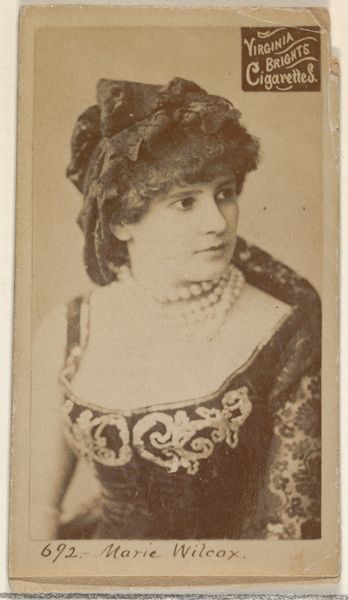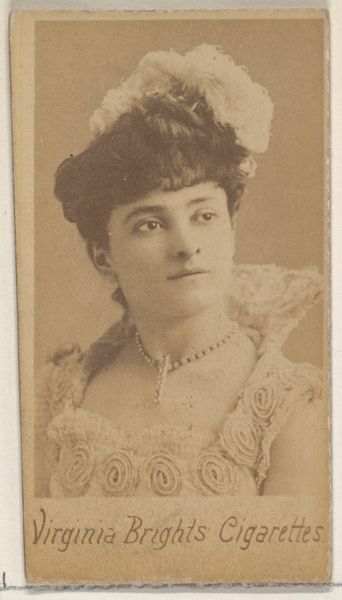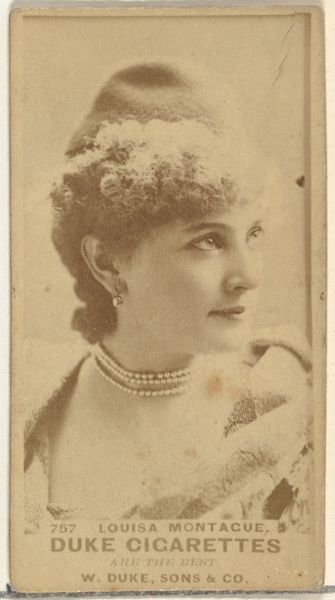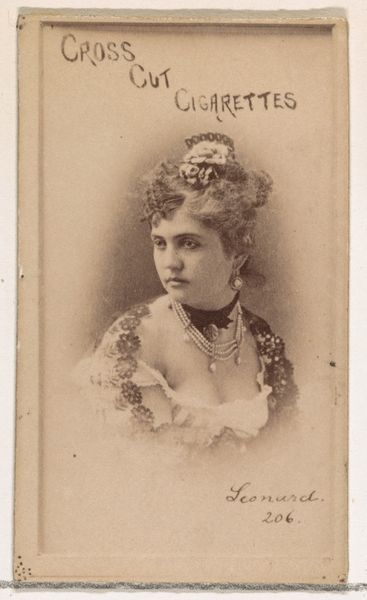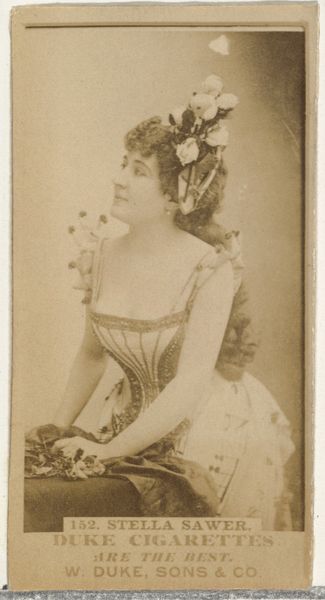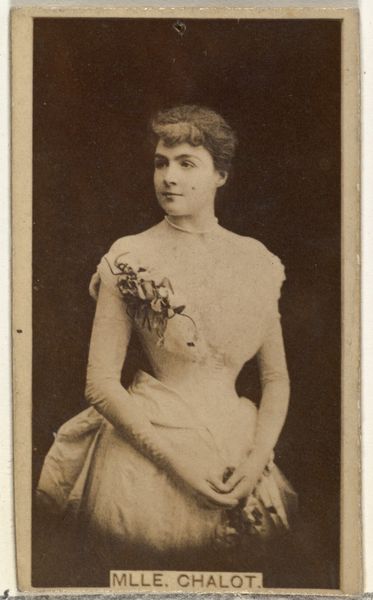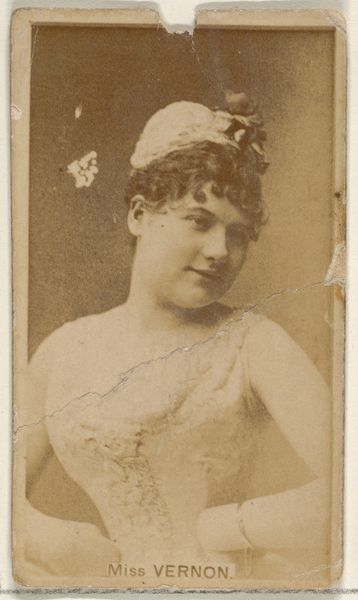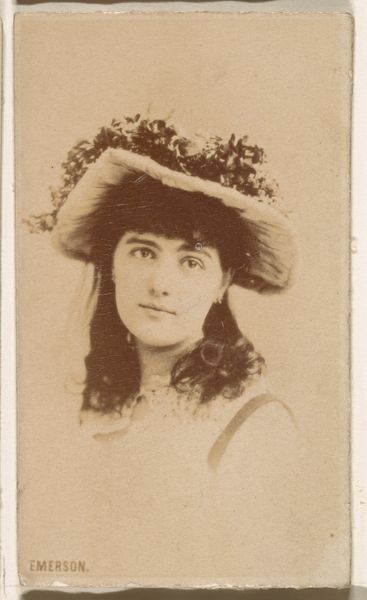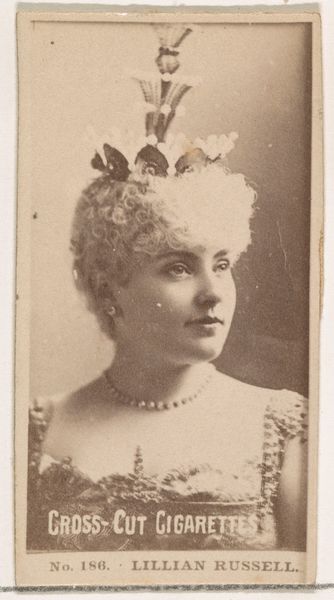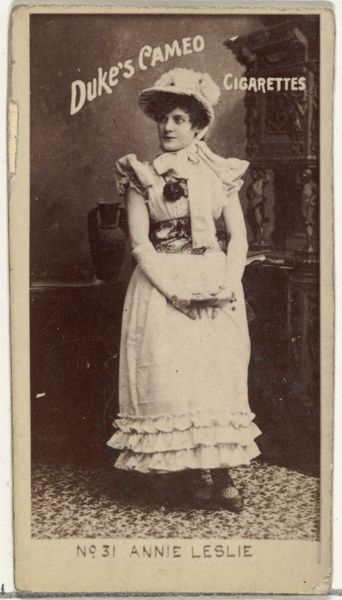
Mlle. Rositi, from the Actresses series (N245) issued by Kinney Brothers to promote Sweet Caporal Cigarettes 1890
0:00
0:00
print, photography
#
portrait
# print
#
photography
#
19th century
Dimensions: Sheet: 2 1/2 × 1 7/16 in. (6.4 × 3.7 cm)
Copyright: Public Domain
Editor: Here we have “Mlle. Rositi,” a print from 1890, made by the Kinney Brothers Tobacco Company as part of their Actresses series. It looks like a photographic portrait reproduced for mass consumption, judging by the materials and the "Sweet Caporal Cigarettes" promotion. What can you tell me about this image, focusing on its production and societal implications? Curator: Precisely. The image exists not primarily as art, but as a commodity. Note the photographic print process, designed for mass reproduction on these cards that were packaged with cigarettes. Consider the labor involved: the photography, the printing, the packaging – an entire industry built on the circulation of images tied directly to consumption. How does the portrait’s inherent beauty stand in contrast to the mechanics of production? Editor: That’s a perspective I hadn’t considered. The artistry feels almost secondary. Does the promotional aspect cheapen the artistic value? Curator: I wouldn’t say “cheapen,” but recontextualize. Consider the lace. Handmade lace was extraordinarily valuable. Here, printed lace signifies luxury while actually being a mass produced simulation available to a broad consumer base. What does it say about the blurred boundaries between class, craft and industrial manufacture? How does a medium like photography affect drawing and printing practices and the social hierarchies inherent in art? Editor: So the card becomes a microcosm of the era’s industrial and social shifts? The materials and their reproduction are key to understanding its meaning? Curator: Absolutely. It embodies a complex interplay between artistic representation, industrial production, and consumer culture. Seeing the "Actresses series" portrait as such also illuminates how traditional skills of the artist gave way to reproducibility via consumer-facing technology. Editor: I've learned to look beyond the image and into its making. Thanks for shedding light on how context defines its value. Curator: A vital skill for any budding art historian. Now, what other hidden histories are concealed in plain sight within these gallery walls?
Comments
No comments
Be the first to comment and join the conversation on the ultimate creative platform.
